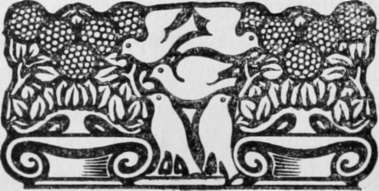Mounting And Binding
Description
This section is from the book "The Barnet Book Of Photography", by Herts Barnet. Also available from Amazon: The Barnet Book Of Photography.
Mounting And Binding
When the exposed, developed, and fixed lantern plate is finished we shall require to mount it so as to protect it from injury, and a certain exactness and neatness in this connection is essential. The first things to obtain are what are known as cover glasses ; these must be the same size as our slide, 3 1/4 in. square, and should be as thin as possible. For this purpose the beginner will find his spoiled lantern plates with the old emulsion cleaned off just the thing. Wash them well and polish, and only use those that are free from scratches and bubbles.
Next some paper masks will be required such as are sold for the purpose, known as lantern-slide masks. These are square pieces of opaque paper 3 1/4 in. square, and with cut-out openings of various shapes and sizes. Oblong shapes will be found the most useful. Ovals and circles are to be recommended least of all.
Binding strips are also required—these are narrow strips of black gummed paper, which are used to bind the slide, mask and cover glass together.
Take a piece of clean white paper, and lay it on the table before you. Examine the lantern slide and see it is perfectly dry. Gelatine such as the lantern plate is coated with absorbs moisture, and undergoes decomposition much more readily when damp.
Hence it is a good plan to warm the slide well before the fire before binding it up, and also see that the mask is bone-dry. This done, place the slide, face or film side up, upon the sheet of paper, and upon it lay the mask of paper that suits it best; in this the same taste and judgment should be used as in trimming a paper print. See that all dust has been brushed off the slide, and place upon it the cover glass (or, if a cloud is to be introduced, the sky slide) having the film of the slide and the paper mask between the two. All that requires doing is now to bind round the four sides of the two glasses with the binding strips, seeing that they are well secured all round. This will protect the whole slide and keep it from scratches and damage.
It is now important that the slide shall be marked in such a way that there shall be no doubt as to how it is to be put in the lantern, for it must be remembered that the lanternist works mainly in the dark.
A recognised standard of marking has become established to ensure correct working, and this is quite simple. Hold the slide in such a position that you can see the subject just as in nature, then place on the top corners of the slide two round spots of white paper. With a slide so marked, any lanternist who may happen to handle the slide will know that for the picture to appear on the screen in the right way he will have to place the slide in the lantern with the spots downward and towards the light.
Before being shown, slides should be carefully cleaned of all gum and dirt, and finally polished with a soft rag.
L. Coulthurst.

Continue to:
Tags
paper, print, negative, exposure, lens, development, camera, focus
